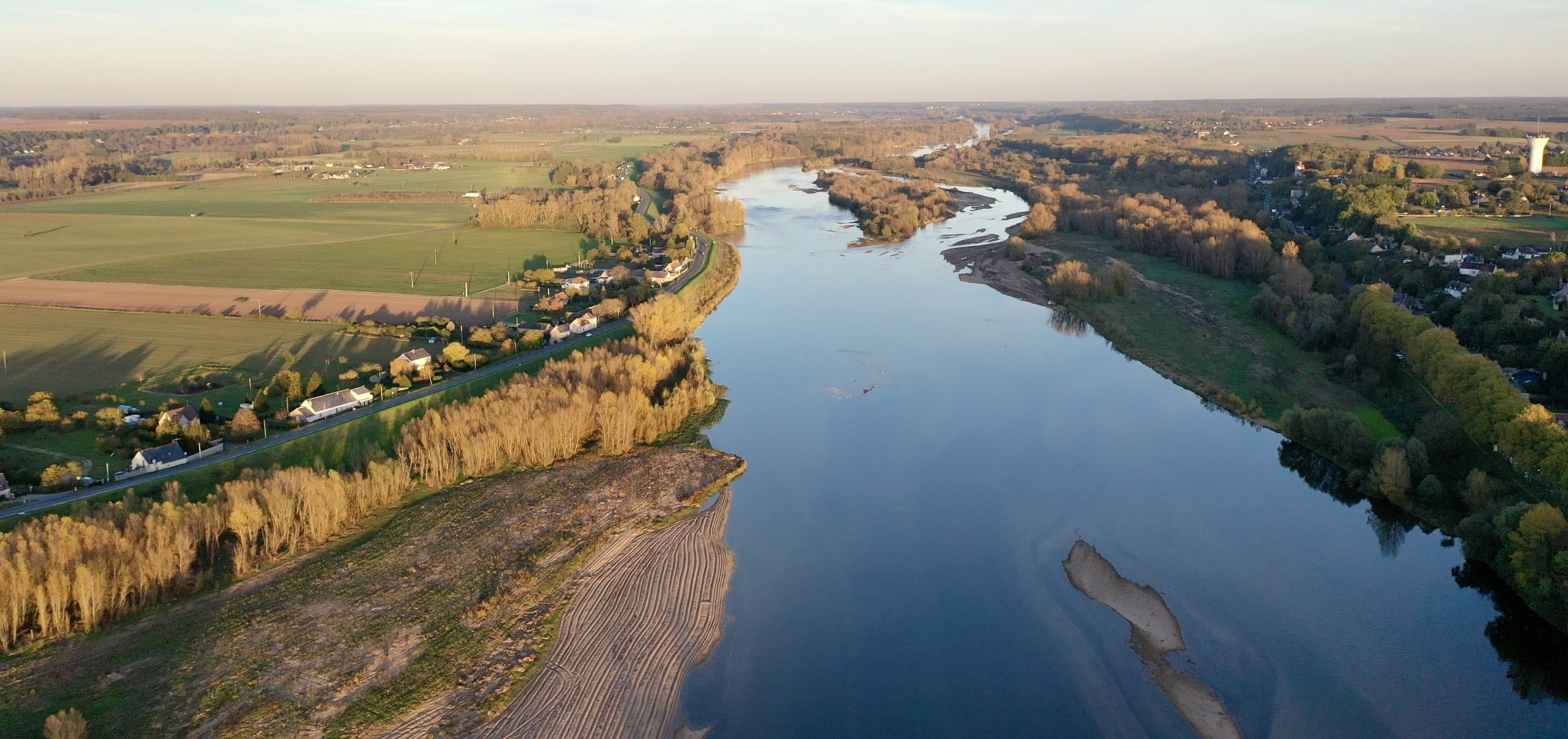
After a string of scorching summers, we had a lucky break in 2021 in what now seems like a season we’ve all been waiting for half of our lives. Some European regions were hit by spring frost but almost everywhere else in Europe was cooler and rainier earlier on than usual which continued into the early summer. The year showed a reduction in volume but the results are often excellent for those looking for a more elegant version from their favorite regions. The vineyards were heavy on fungus, which required a lot of sorting by hand long before harvest, and once the warmer weather finally came it was still cool and pleasurable, unlike the blistering pain of the previous summers and the one that followed. During the latter, it was uncomfortable just to go anywhere outside until the sun was out of sight, or to try to take refuge at home (few in Europe are set up with air good conditioning, even though it’s been available since 1942), or even to find relief at the beach, where, after three minutes out of the water, it was time to go back in. I remember four big heat waves that summer between June and September, and the spring was uncomfortably warm, too. Insuportable!—the sweaty Catalan gasp of summer 2022.
Though the term is overused to describe many vintages, a true “classic” is hard to come by these days in European wine regions. I’ve come to understand that, at least for me, some growing seasons impart characteristics that remind me of the glory years in the most historic wine regions of the last century when the vines eked out ripeness just in time for the change in weather that comes with the earth’s tilting back the other way. Though some years hit a few of the marks and stir excitement when the wines are young, the complete package often comes up short after more time in bottle. It’s important to taste wines out of barrel every year to get a clearer read on what’s really happening, though I admit I’m sometimes distracted by the romance that comes with this being what I do for a living, and I forget to pay attention at times. Young wines seem much fresher and more tense in their early moments in bottle than they really are, making it sometimes difficult to assess if a vintage should really be described as “classic.” Even no-added-sulfur wines at bottling freshen up for a period before they regain their true characteristics, just like when wines get a good oxygen hit during racking in the cellar, leading to a short window of one of the most honest and pure moments of a wine’s entire evolution from vat to bottle.
For many northern European wine regions, 2021 hits all the “classic” markers: a cool growing season with a good balance of cloud cover, rain and refreshing winds to provide a longer window than normal for the growers to meticulously select the best fruit and to harvest within the fruit and structural profiles they prefer. Harmonious and with graceful fluidity, the 2021s tend to have greater freshness and higher natural acidity and lower to more moderate alcohol than from an average season, so you can drink more of them! What’s not to love about a “classic” year?
I was in Portugal for most of the summer after a solo six-week road trip that started in Portugal and cut across northern Spain, southern France, through the Alps into northern Italy and back up through mountains to Austria, cutting back through Germany’s Rheinhessen, across to Champagne and Chablis, down into Burgundy and the Rhône and finally back to Portugal. I remember my surprise in response to the soggy, foggy and gray middle of June when, between showers, I went on runs from Michael Malat’s Kremstal winery, up the painfully steep and will-shattering rise of over a hundred meters in a span of just a kilometer, on the way to the Stift Göttweig, the historic abbey. There I was met with towering views of the valley below carved out by the Danube—the glorious, viticultural dreamland of the Wachau, Kremstal, Kamptal and Wagram. (Traisenthal is very close too, but mostly out of sight.) After that last rainy period in June, things took a steady course until harvest. The rest of the season remained cool for some regions to pick earlier than others without any severe heat waves (that I can remember), but a late summer and early fall drought began in other regions (such as Italy’s Langhe) prior to the fruit ripening.
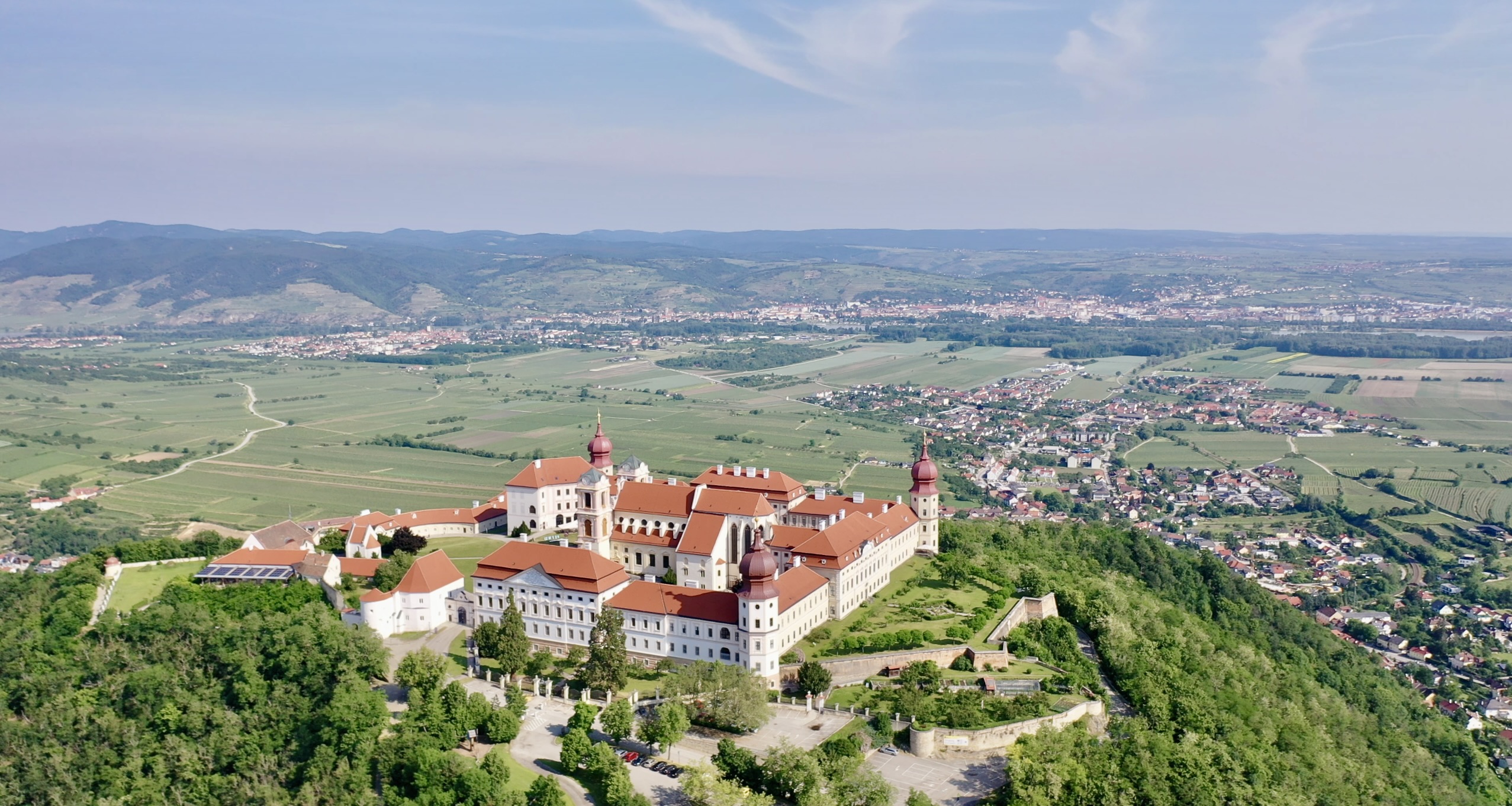
Many regions made what appear to be historic wines in 2021, and for a lot of northern European white wine lovers, this year is tailored for the classicists—those who remember (and dearly miss) the days of the fresh and the tense, the mineral-laden wines that barely made it to a natural 12% alcohol without picking before the phenolics were in the grower’s ideal balance. 2021’s natural acidities are typically high, mineral nuances tight, sharp, and finely textured, and fruit profiles more citrusy than tropical. Austrian 2021 whites are as good as those from more than twenty years ago, like the historic 1997, 1999 and 2001. (Sadly, this predates Peter Veyder-Malberg’s Wachau project; wouldn’t we love to taste his wines if they were made back then?)
2021 marks perhaps a perfect vintage fitted to my taste in both Grüner Veltliner and Riesling. It also stands as the undisputed best young vintage I’ve tasted with regard to depth from either variety, though, for me, 2013 is right there with it. German Rieslings seem to be a dark horse that will pay dividends for the believers and those experienced enough to know the merit of youthful austerity evolved after much time in the cellar; oh, how I love balanced austerity! Northern French and Galician whites had stellar years, though the 2022 Albariños may edge out 2021 by a nose, which didn’t happen in other European areas that had much hotter conditions in 2022. The white and red wines from the Loire Valley are superb, and it’s surely our Saumur-based superstar Arnaud Lambert’s best vintage to date!
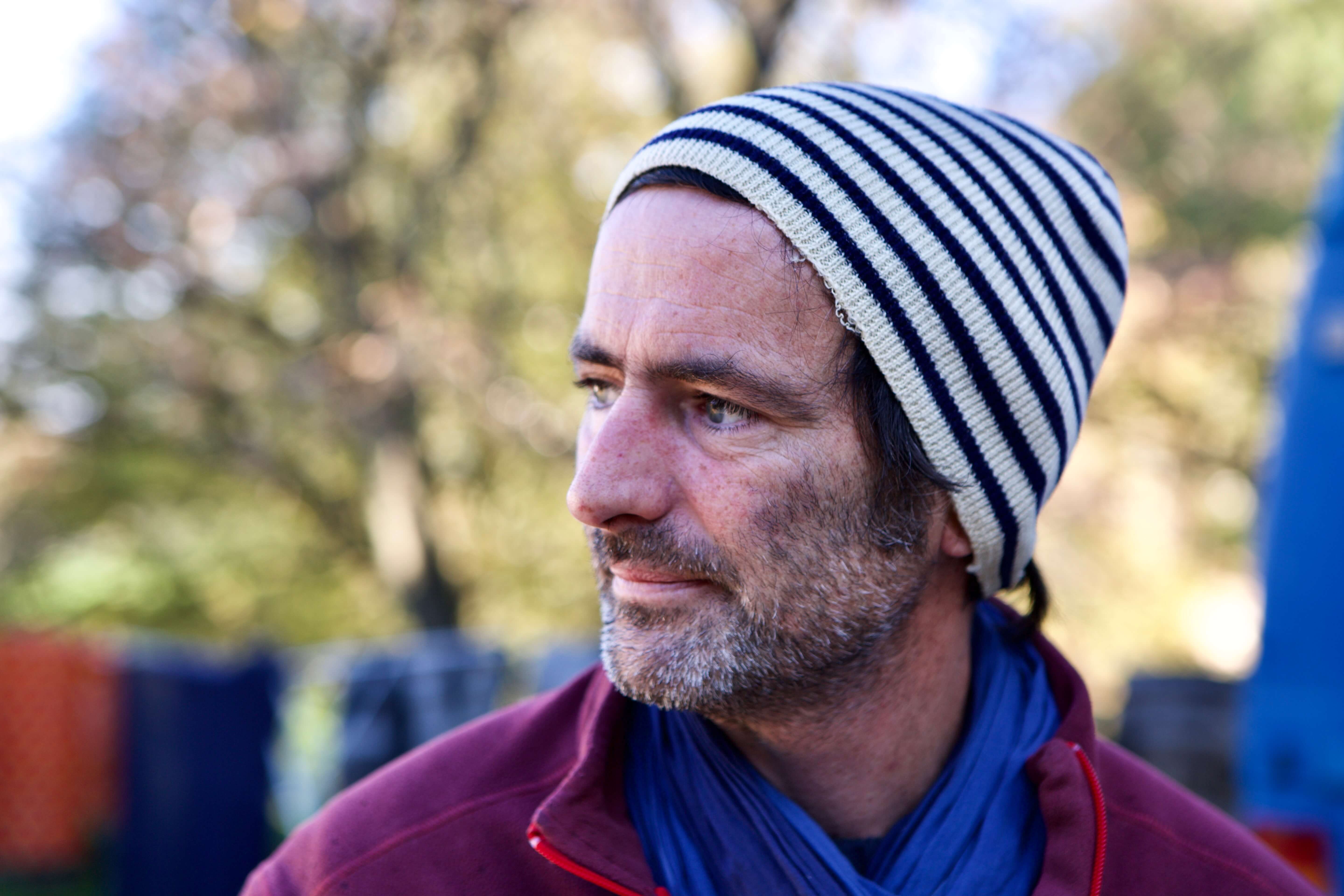
This month’s featured producer keeps us close to Lambert country, only slightly more than an hour-long drive on a hilly country road to the Loire River and straight east from there to the more verdant and humid Montlouis-sur-Loire. There we meet again one of our newest treasured vignerons, Vincent Bergeron, and his emotionally moving and finely etched 2021 Chenin Blancs (bubbles and still) and his full-of-life and delicately nuanced ethereal Pinot Noir. Vivid is my memory of these 2021 wines out of barrel on my first visit with Vincent, and casually slurping them down with oysters, cheeses, patés, and bread on a wobbly, makeshift table in his driveway in front of the tuffeau limestone wine caves during my second visit shortly after their bottling. Though the wines have changed over the last six months, since they’ve been bottled, I can confirm that the ones I nurtured in Spain over the last week while writing this newsletter validated my memory of their allure and proved that my subsequent infatuation is not based on embellishment or fantasy.
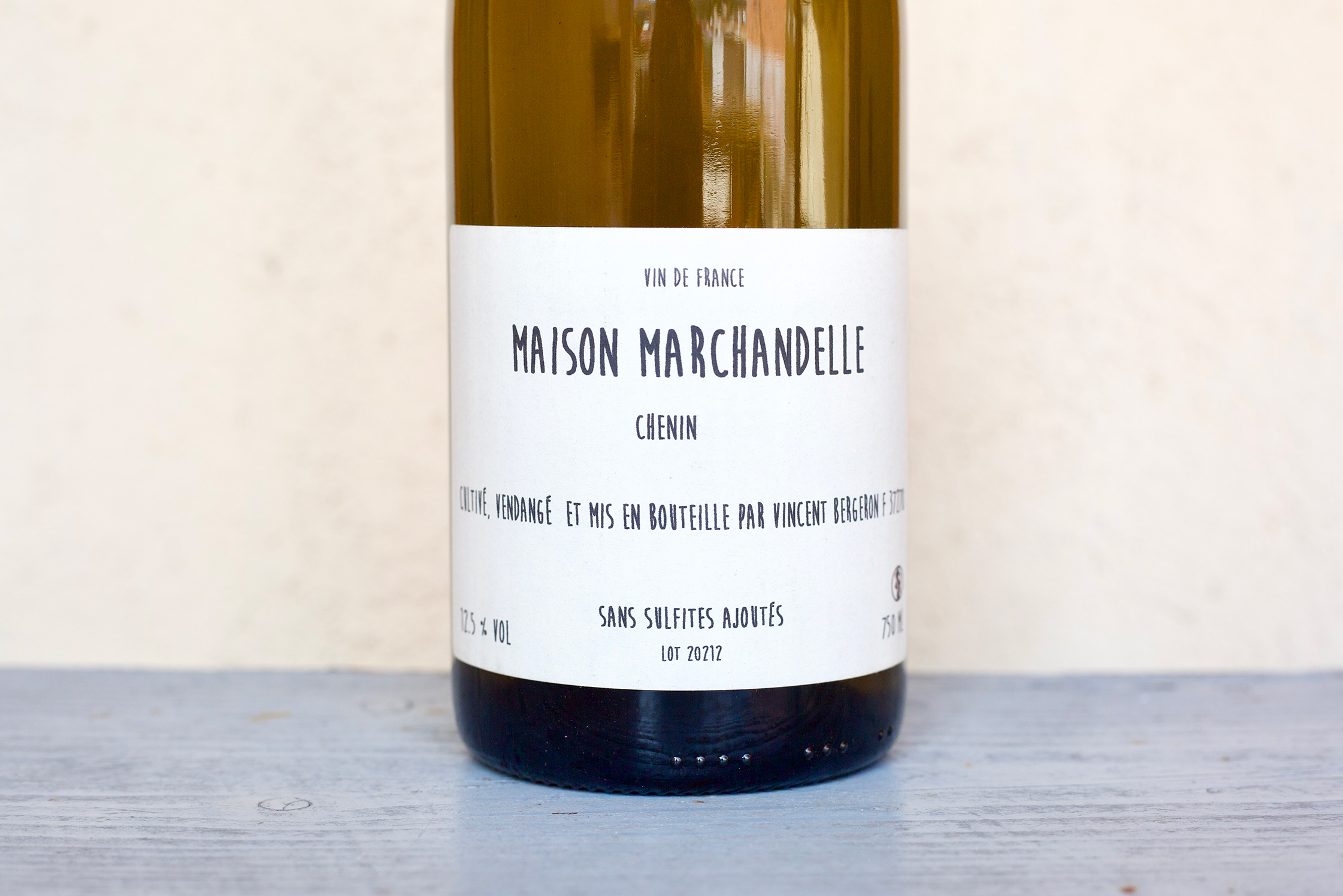

Vincent Bergeron is a vigneron’s vigneron, a human’s human, an uncontrived example of how to live and simply let himself be, spiritually, without trying to become “someone.” He only tries in earnest to be himself—not for the world to see and celebrate, but for his family, his comrades, himself, and his humble yet idealistic relationship with wine and connection to nature.
Vintage is important with Vincent’s wines. With his concession to nature and commitment to honor the season, sans maquillage, ni compromise, he sets his wines on a direct course, showcasing each season’s gifts and its challenges, allowing his wines to freely express the mark of their birth year. Warm vintages like 2020 taste of a season’s richer fruits and have a softer palate while still being delicate and complex. Cold years like 2021 are brighter, fresher, more tense and sharp.
Vincent explains that between Vouvray and Montlouis there have always been differences in soil structure, topography, and social hierarchy. While Vouvray maintains a more celebrated vinous history (as illustrated by the bougie houses across the river, so different from Montlouis’ more rural and less ornate neighborhoods), some of its historical relevance seems to stifle creativity and growth—as happens so frequently in many historically celebrated regions in the wine world.
In contrast to Vouvray, Montlouis-sur-Loire is filled with young and finely aged winegrowers with a strong desire and capacity for kinship, the sharing of ideas, and progress. Many had widely varied experiences prior to choosing the vigneron life and together they’ve created a tribal environment where they help each other to push that rock further up the hill. Organics have become a way of life for many in this circle and the influence of this free-thinking community is expanding. Montlouis is exciting and there are so many talents emerging from this extremely praise-worthy appellation that’s up to now been such an underdog.
Though the land was already worked organically prior to Vincent’s last fifteen years of ownership, it was certified as such in 2018, and biodynamic principles are followed in the season’s life cycle, though Vincent clarifies that they’re not followed closely in the cellar. Plowing is done mostly by horse or tractor every third year. The harvest begins with alcoholic and phenolic maturity in line with the chemistry of the grapes—pH, TA—and of course, the taste of their taste. Pinot Noir is the first to be picked, followed by Chenin Blanc for sparkling, and finally, the still Chenin.
There is much more about Vincent on his profile on our website. Click here to read more.

Emotionally piercing, Vincent’s mineral-spring, salty-tear, petrichor-scented Chenin Blanc wines flutter and revitalize; a baptism of stardust in his bubbles and stills—a little Bowie, a lot of Bach.
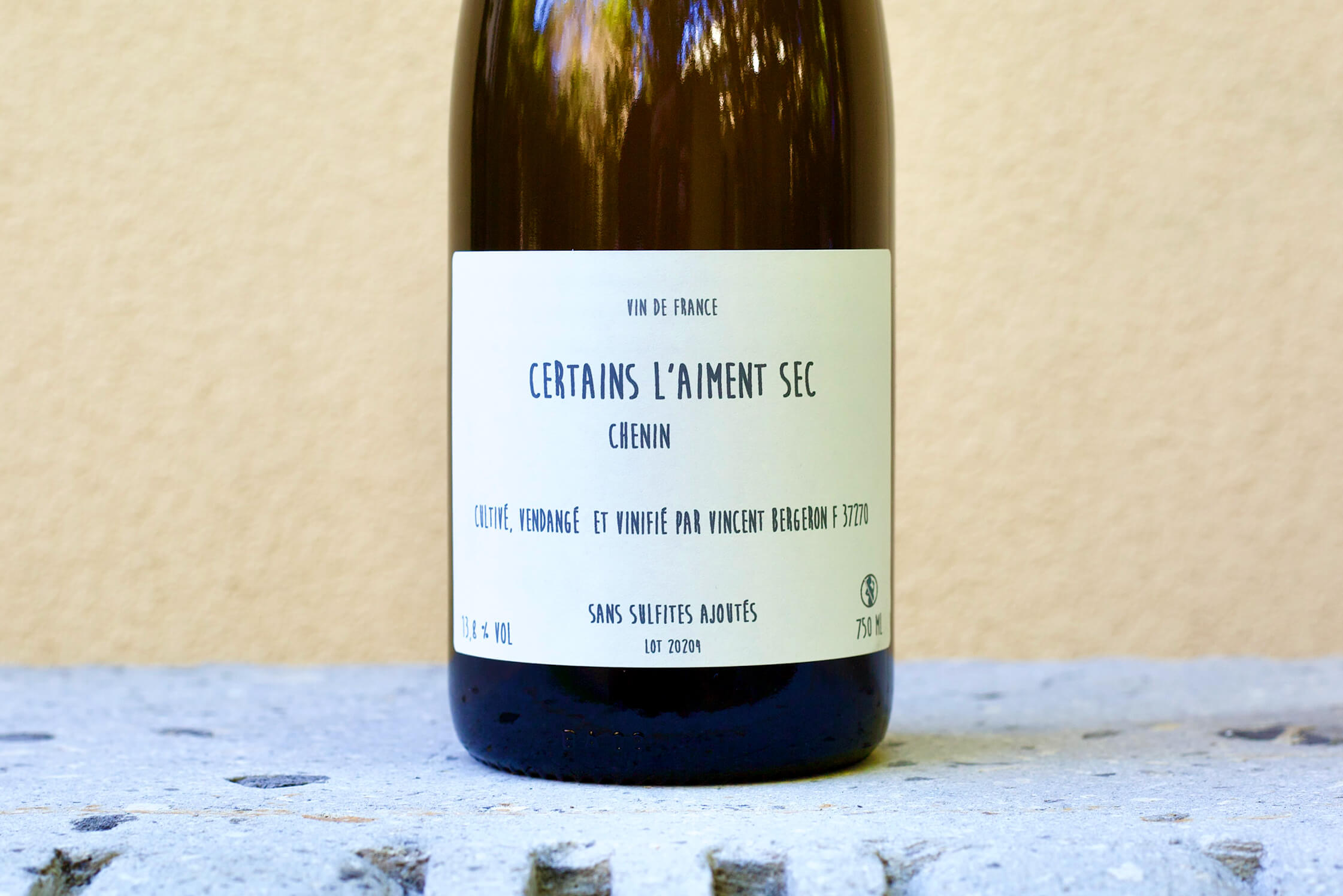
Vincent’s bubbles, the 2021 “Certains l’Aiment Sec” started out as Bach last fall and rebelled its way over the last seven months into more Bowie. At the domaine we made short work of a bottle of 2021 that was delicate and fine, maybe too pretty and too easy to slurp down? And perhaps because there is never a lot of this wine made! The bottle opened at the end of last month was more gastronomic and quirkier in a good Chenin-y way and shares quite a lot of similarities to Pinot Meunier-focused Champagne growers with deeply committed organic and biodynamic practices. Not so flowery and ethereal as it was last fall, it developed into a much more aromatically gourmand and abstract wine with notes of yellow apple, lemon pith, yeast, wheat and wheat beer, fresh oregano, first of the season freshly cleaned artichoke hearts, and the sweet and tender heart of a celery stalk. It’s savory and finishes with a welcome bitterness and plenty of refreshing acidity to cleanse for the next bite in the early courses of lunch and dinner.
It’s made with a simple method using early pickings from the Chenin Blanc young-vine parcel. (Here, in this part of the Loire Valley’s Chenin Blanc regions, many growers make numerous picks on their vineyards rather than just the one—a smart and utilitarian method to maximize quality with what yield nature provides, without being too forced.) Spontaneous fermentation takes place in fiberglass vats. Following malolactic fermentation, the wines are given their first and only sulfite addition of 20mg/L for its eighteen-month bottle aging. No fining, no filtration, no dosage.
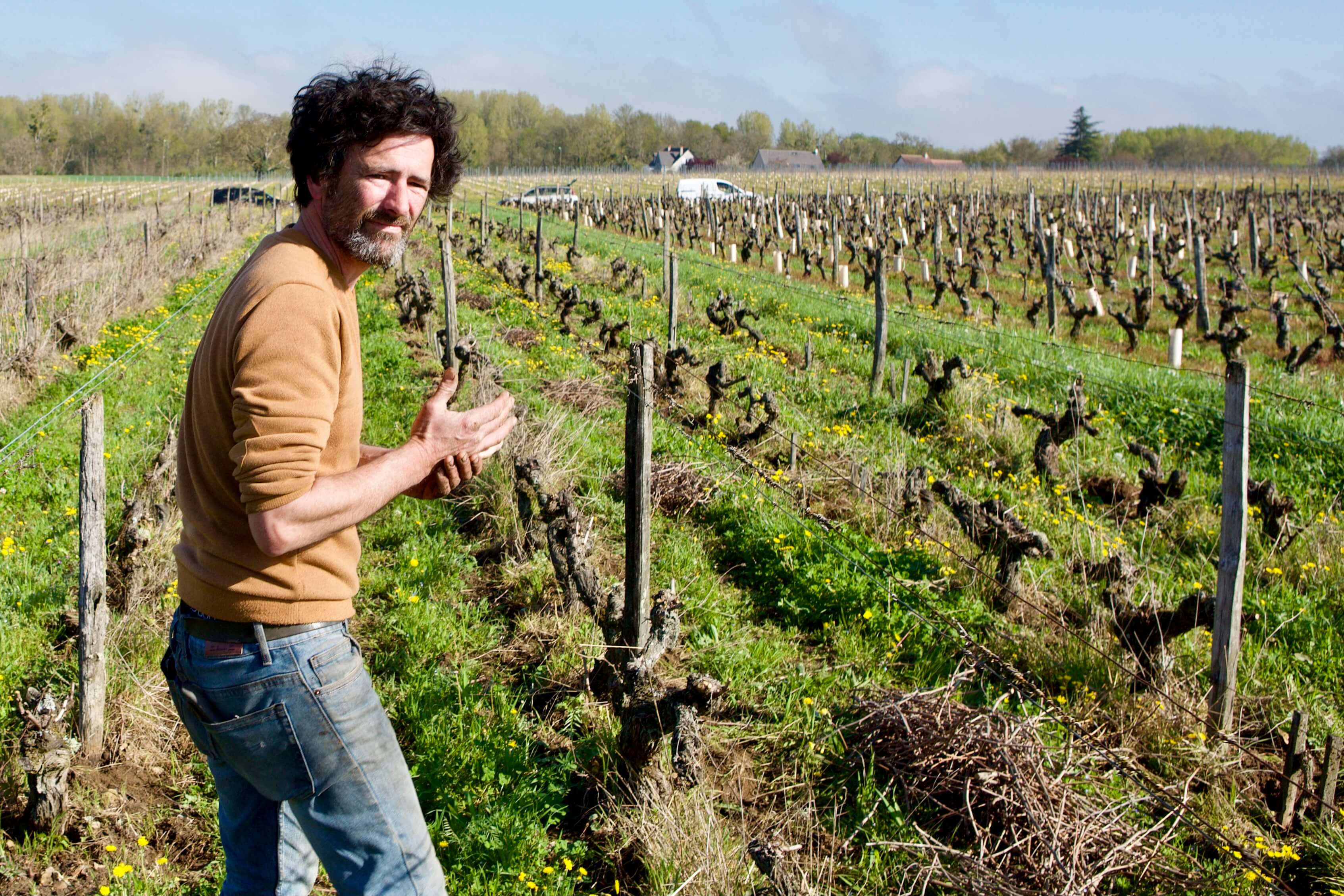
Vincent’s inspiring 2021 Chenin Blanc “Maison Marchandelle” grown in Montlouis-sur-Loire is a vintage tailored to his preferred style: helium-lifted, minerally charged, cold, wet rock and taut yet delicate white fruit. It comes from Vincent’s favorite single plot of 50-year-old Chenin vines called Maison Marchandelle. The bedrock is tuffeau limestone and the topsoil, calcareous clay and sand. The clay brings breadth and depth while the sand and tuffeau keep this wine in the clouds.
My first impression out of bottle in June 2023 was one of a cross between a Meursault of old, and a cru from Brézé raised in neutral oak barrels. It’s rich in woodsy aromas, hazelnut, sweet chanterelle, fallen wet oak leaves, Devonshire cream and creme fraiche, acacia honey, magnolia, cherimoya, and pear. If tasted blind in its first hours, I might mistake it for a cold vintage Meursault (though perhaps not within a lineup with other Meursaults) if it wasn’t so gentle and less muscled up—think a light version of old François Jobard (I believe all under the label of Antoine Jobard now) aromas with some age but without the cut of the harder limestone, dense core, and the fat of Côte d’Or’s rich clay.
I had to leave the house to go out for dinner so as not to guzzle it to the end. On day two, it continued on the same path, and the palate strengthened a little more and deepened in complexity. The pear went a little more apple with a welcome smidge of strudel and spice. Fully intact and even improving on day three, it began to shed its Bourgogne-ness and moved much closer to Brézé in style and weight yet it was still quite different from many Chenin Blanc grown in Montlouis or Vouvray. It’s absolutely delicious and seemingly indefatigable in its first year in bottle.
This low sulfite dosed Chenin (20mg/L in total) is raised eight months in oak barrels (with some new to replace older barrels—beautifully woven into the wine) followed by four months in fiberglass tanks before bottling. Vincent’s Chenin Blanc is truly singular for this variety in the Loire Valley, so much so that it doesn’t even seem to be of this earth, but rather plucked from the heavens, angelic, virgin, pure, untainted.

In recent years, I’ve terribly missed Pinot Noir that showcases the grape’s nobility and naturally bright, energetic, straight flush (hearts or diamonds) of red fruits and healthy forest with wet underbrush. I didn’t expect to find such a shining example outside of Burgundy, let alone in France’s Chenin Blanc country. During my first visit with Vincent, I was tempted to be impolite and drink down my entire generously large barrel taste of the 2021 Pinot Noir “Un Rouge Chez Les Blancs” grown on an acre of vines (0.17ha planted in 2017 and 0.27ha in 1978) instead of returning the precious amount left after my first two sips to whence it came. It was jaw-dropping out of barrel, a burlesque walk from glass to nose and mouth, and I could’ve nursed that first 500-liter barrel to completion. It was sensual, honest, captivating, pristine, and delicious; egoless Pinot Noir, crafted into a sublime balance between nature and nurture.
As I write this the day after tasting my sample bottle on the longest day of the year, more than six months after bottling, it’s more relaxed and lower key but with the same seductive spirit. Delicately crafted, sans soufre and sans concerned-enological-brow-raising, the first two hours open tested our restraint, especially my wife’s, but we very much wanted to give it more time to reveal its full breadth on day one before gulping it down. After the first sips, we decided to open our fifth bottle so far this warm season of the gorgeous 2021 Jean Foillard Morgon “Cuvée Corcelette” to slow our roll, but as delicious as that was, it didn’t stave us off for long. We were only disappointed with the bottle size (standard 750 ml), and the wine was down the hatch in two hours, leaving us with what felt like unfinished business; like the power went out in the theater just before the best part of the movie.
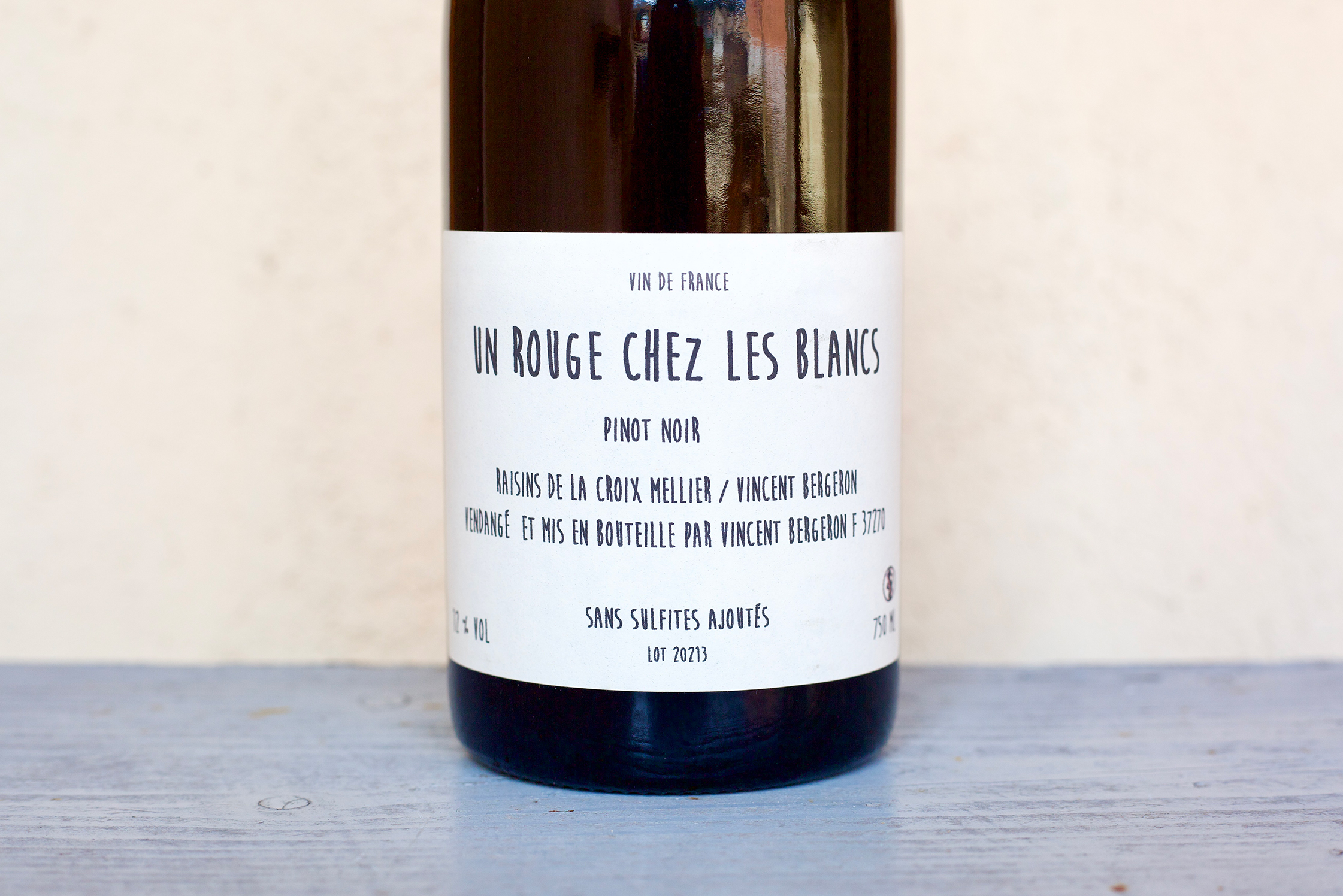
In those two hours, the wine could be described as a combination of the finest understated Sancerre Pinot Noir from a cool year and an elegant Richoux Irancy and Lafarge Volnay of old, with a dash of Yvon Metras’ subtle yet often intoxicating Fleurie nose and slightly stern, gravelly mouthfeel, you can imagine this lovely Pinot Noir’s aromatic color palette and pointed-yet-fine structure. Grown on limestone bedrock and calcareous gravel and sand, the first glass emits dainty, sweet, red flowers (think Beaujolais florals), crunchy wild berry fruit (not to be confused with the store-bought greenhouse variety), verdant pastoral greens, fine wine lees, strawberry skin, orange, citrus, fresh mint, fresh oregano, gravel, and wet dirt. The palate is delicate but has fine, pointed tannins and very fresh acidity.
There’s no sulfite added, so the future of each bottle will be in the hands of the handler, though with its naturally low pH, high acidity, and low alcohol, and, most importantly, its balance, it should manage well over time. One pump-over per day in the early stages of fermentation and two later on, a year aged in 75% old oak barrel, 25% fiberglass tank, and it’s not fine nor filtered.

